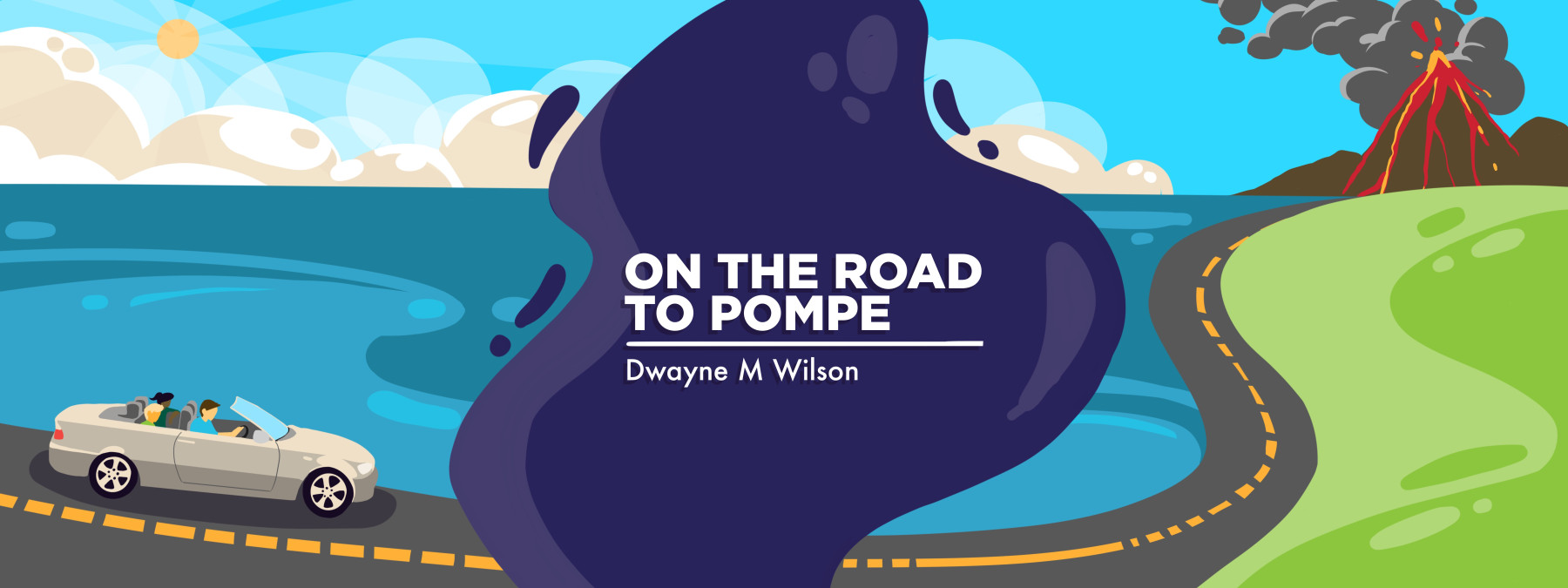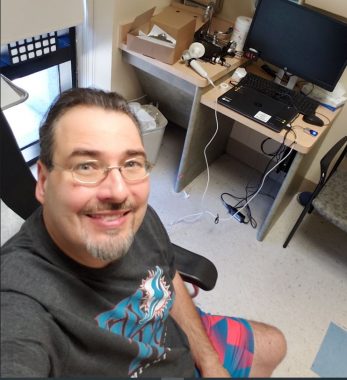The Lengthy Doctor’s Appointment That Was Like a 3-ring Circus
Receiving a Pompe disease diagnosis required a lot of patience and prodding

When I was a kid growing up, my mother used to say I was husky. I wasn’t very active, and I rarely found myself exercising. You definitely would not call me athletic — I never could do a pushup, situp, or pullup like the “normal” kids. It was just the way I was, even as a teenager.
I grew up overweight and out of shape, which was a constant battle. When people look at me now, they see a really big guy who stands 6 feet, 5 inches tall and weighs 290 pounds.
Sometimes I’ll be walking — through a parking lot, for example — and people will come up to me with concern and wonderment, asking me if I’m in pain because of how I walk. I tell them that I’m fine, that it’s just more comfortable for me to walk leaning backward. However, with my backward arm movement and belly sticking out leading the way, I look and feel like an ape.
At the time, little did I know that this walk is a characteristic of Pompe disease. Weak hamstrings and calf muscles, combined with weak core muscles, pull me and cause me to lean backward to compensate, a condition known as lordosis, or swayback. Prevalent in Pompe patients, lordosis is one of the reasons I prefer to sit rather than stand or walk during my daily life.
A clown car scenario
One day, I sat patiently in a waiting room at the ALS & Neuromuscular Center at UCI Health in Orange County, California. When my name was finally called, this apelike giant stood up and walked into a patient room while owning center stage. The three-ring circus was about to begin.
A nurse took my vitals and asked a slew of personal questions before a doctor appeared. I went through all of the various physical motions with my arms, hands, and fingers to test for muscle strength. The doctor lifted my legs and bent my feet and ankles. He even examined my mouth, cheeks, and tongue in addition to asking more questions.
Dr. Tahseen Mozaffar, a neuromuscular specialist I’d met the previous weekend at a United Pompe Foundation patient meeting (which I described in a past column), entered the room and had me perform the same body movements to test my muscle strength and flexibility. He called a third doctor into the tiny room, as if this sideshow anomaly was a must-see. It was getting cramped in there with all the doctors, making it feel even more like a circus.
I performed more range-of motion movements with my upper and lower body, then walked up and down the hallway in an apelike fashion.
All three doctors then left the room, and the circus continued into ring number two. A respiratory therapist came in and administered some breathing tests, in which I inhaled and exhaled into a tube while sitting down. Something that looked like a Vicks inhaler was shoved up my nose. I tried to inhale as hard as I could and felt a bit dizzy.
Next, I repeated all of the breathing tests while lying down in a supine position. Man, did I have very little breathing capacity while lying down.

Dwayne prepares for breathing tests ahead of his diagnosis. (Photo by Dwayne Wilson)
Soon after that, a physical therapist entered the ring and had me do some muscle movements with my arms and legs, just as the previous three doctors did. The process seemed never-ending. At that point, after hours of feeling like a circus animal, I started to get tired. Another nurse came in, stuck a needle in my arm, and took a few tubes of blood.
Finally, Dr. Mozaffar returned and gave me my official diagnosis: late-onset Pompe disease, along with acute and chronic respiratory failure, lysosomal storage disease, and biallelic mutation of the GAA gene. A sense of relief rushed through my body as I learned the cause of my muscle weakness and fatigue.
Now I could work on the next steps of my future with Pompe. To start with, the doctor prescribed me a BiPap ventilating machine to help with my breathing while I slept at night.
One last person entered the room and presented a final declaration, which ended the show. She was the clinical research coordinator I’d met at the same patient meeting where I met Dr. Mozaffar two days earlier. In her hands were my choices for treatment. The options being presented to me would come to shape my journey with Pompe.
The entire appointment had taken more than half a day. I was ready for it to be over, but also thankful for everything that had happened in the circus ring. I was prepared to start my journey, and a new beginning lay ahead of me. I was now in motion and “On the Road to Pompe.”
Note: Pompe Disease News is strictly a news and information website about the disease. It does not provide medical advice, diagnosis, or treatment. This content is not intended to be a substitute for professional medical advice, diagnosis, or treatment. Always seek the advice of your physician or other qualified health provider with any questions you may have regarding a medical condition. Never disregard professional medical advice or delay in seeking it because of something you have read on this website. The opinions expressed in this column are not those of Pompe Disease News or its parent company, Bionews, and are intended to spark discussion about issues pertaining to Pompe disease.








Leave a comment
Fill in the required fields to post. Your email address will not be published.